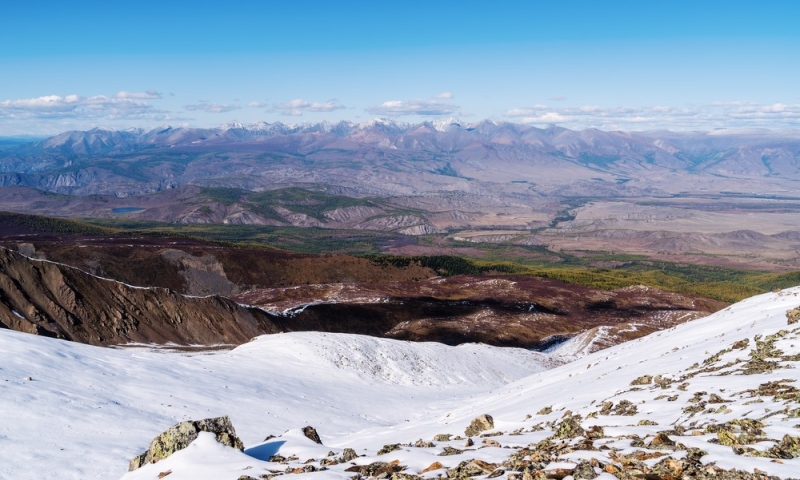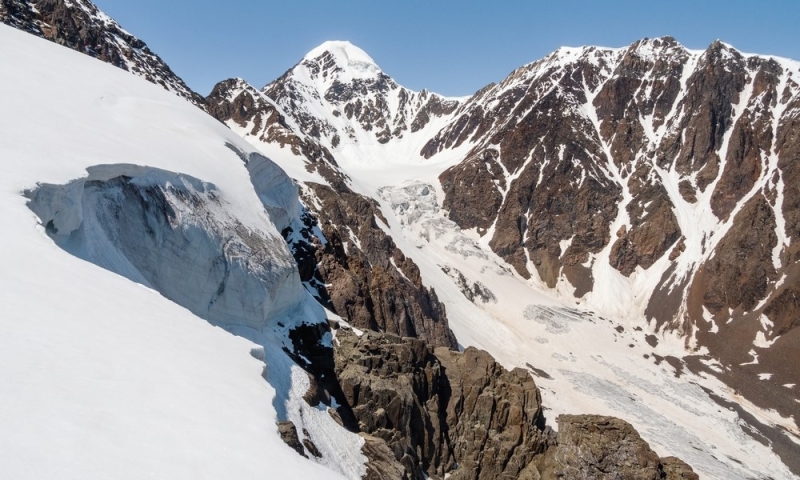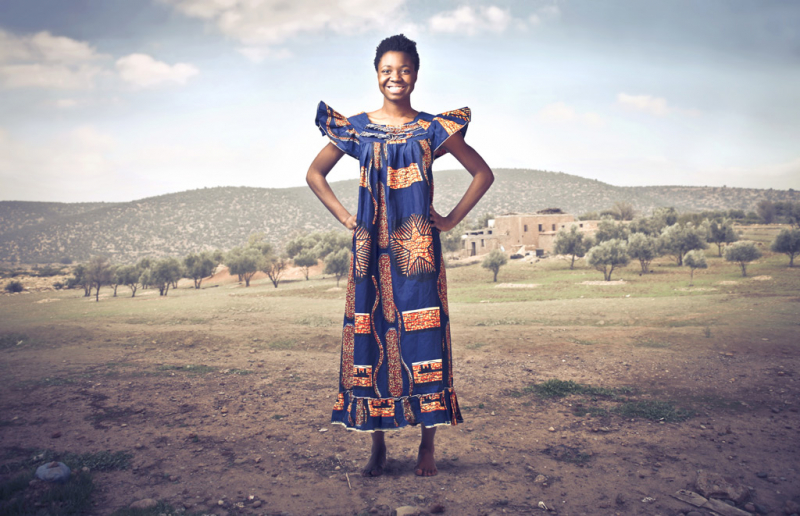
Touch the power of ancient glaciers, live at an altitude of 2,150 meters above sea level and feel the atmosphere of real big mountains – you can do all this on a trip through the Aktru Gorge in the Altai Territory.
The gorge was formed thousands of years ago, when powerful glacial tongues slowly and inexorably made their way along the North Chuya Range, cutting canyons into the rocks, creating rivers and cascades of waterfalls. Today, the Aktru glacier (more precisely, there are two of them – Small and Large) is one of the largest in Altai, in some places its thickness reaches 360 m.
How to get there

You can fly from the central part of Russia to Altai by direct flights. Prices for tickets from Moscow to Gorno-Altaisk and back start from 15,000 rubles*.
Travelers from nearby regions can conveniently travel by train to Biysk. Tickets from Novosibirsk cost from 1,770 rubles in both directions*.
Next by car, taxi or regular bus you need to get to the village of Kurai along one of the most picturesque roads in the world – the Chuysky tract. This trip is in itself a fascinating journey among the hills and mountains, along mountain rivers and past passes with stunning panoramas of the Altai expanses.
After this, a real adventure awaits you, which will be remembered for a long time – a trip to the Aktru Gorge. There is no good road there, and local residents go where it is smoother and more convenient, and part of the way is completely off-road. The route is laid along the valley of the noisy Aktru River, where you will have to cross serious fords with huge boulders and ocean-sized mud puddles.
If your car is not prepared for extreme travel, it is better to leave it in Kurai or at a transshipment base closer to the gorge. You can hire off-road vehicles from local drivers – UAZ, GAZ-66 and ZIL.
Finally, after shaking and amplitude jumping on potholes at the entrance to the gorge, you will be greeted by a spacious valley with mountain streams, flowers and an impressive view of the Karatash peak.
Desperate travelers get to the gorge on foot with a backpack on their shoulders. Only experienced and hardy hikers can walk about 8 km along a difficult path.
Where to stay

There are several accommodation options in the Aktru Gorge, differing in prices and comfort of living conditions.
The first option is the Altai-Aktru mountain center on the shore of Lake Sachki. This is a complex of several new wooden houses with comfortable beds, heating and a cafe on site.
The second is the Aktru alpine camp, the oldest mountain camp in Altai, created on the basis of Tomsk State University in 1938. Here you can stay in houses or tents on wooden decks. Every year there are training camps for beginner climbers, experienced athletes and mountain instructors.
The most affordable, harsh and at the same time romantic option is a tent in a relict cedar forest not far from the base. The trees are more than 600 years old, and there, among these giants and snow-capped peaks, you feel like a small part of great nature.
If you prefer camping, it’s worth considering some of the nuances of life in a mountain gorge. You will have to wash your face with ice water from the river, which will greatly invigorate you in the morning. Drinkable water in streams running from glaciers has a peculiar taste, but you quickly get used to it. Showers and baths can be used for an additional fee, and lunch can be ordered in the dining room or cafe. But most often independent tourists choose camp cooking over a fire.
Since the camp is located at a significant altitude, an unaccustomed body can produce specific reactions: for example, swelling of the arms, legs and face in the morning. But after a period of acclimatization this usually goes away. But there are no midges or ticks in the gorge. If you are not going to climb and storm peaks above 3,500 m above sea level, then most likely you will not encounter altitude sickness.
What to see and where to go

Aktru Gorge is a treasure trove of trails and trekking routes: there is something to do here for lovers of long walks and professional climbers. There are also categorical routes: from the first to the sixth (highest) category of difficulty.
If you come to the gorge for the day, you can walk along simple routes that do not require special physical training and are accessible even to children.
Valley of Dwarfs (Dwarfs)

This is a small bush-covered forest, so named because of the dwarf plants that fill the valley. It is located near Lake Sachki, and the road there is easy to find.
Rucheiny Waterfall and Maly Aktru Glacier

The route is simple and takes about 2–3 hours. On it you can admire a small picturesque waterfall and take a closer look at the Maly Aktru glacier.
If you do not have much hiking experience, then for more difficult hikes it is better to hire a guide. Despite the fact that the trails are laid out quite well, and there are signs at the beginning of the routes, the mountains are a place of increased danger that does not forgive carelessness. A guide can be found at the base, in a mountaineering camp, or come to the gorge with an organized group.
Uchitel Pass (3,000 m above sea level)

The route is well suited for the first acclimatization and warm-up trek. A gradual increase in altitude will allow the body to get used to the lack of oxygen, and the joints to get used to unusual physical activity. The trail begins on the opposite bank of the river from the mountain camp and runs along it for some time through the forest towards the exit from the gorge. Then the route turns left and a rather steep climb begins. Don’t be alarmed if your pulse jumps here and your heart starts beating in the throat area. Over time, this will pass, and the coming days will be easier.
From above there is a magnificent view of the mountain camp and the entire wide valley, and the river below seems like a thin stream.
Blue Lake (2,800 m above sea level) and the Bolshoy Aktru glacier

The route goes along the Aktru River noisily running down the mountains over the rocks. The places here are incredibly picturesque, and it’s hard not to pause for a photo shoot every five meters. Gradually, the path reaches a level above the forest, and the landscapes around change: they become more severe, grandiose and mystical, there are no plants left, only rocks and stones of the most incredible shapes and sizes.
When you reach the Bolshoi Aktru glacier, it may seem like you have arrived on another planet. Gray sharp rocks, fog and incredible thousand-year-old power emanating from the glacier. You can even break off a piece and taste the ice (it is the same as the water in the streams of the mountain camp).
The Blue Lake, located among the mountains like a piece of sky falling from above, is one of the most colorful locations in the Aktru Gorge. You can swim in the icy turquoise waters, but hardly for more than a few minutes – the water temperature is approximately +2 °C.
Climbers often camp here, preparing for ascents, and curious black animals—weasels—scurry between the rocks.
Yubileiny Peak (3,403 m above sea level)
Many tourists return from the lake to the mountain camp, tired and happy. But if you have strength left, you can rise higher. The steep climb up crumbling stones to Yubileiny Peak is not easy, but the views from above of Blue Lake and the cliffs framing it are worth it.
Three Lakes Dome (3,556 m above sea level)

The route belongs to category 1b; you do not need special climbing equipment to complete it, but there are difficult sections and snow cover. Part of the path is laid along kurums (clusters of sharp-angled stone blocks), where you need to be careful and not stand on unstable stones. There is a small steep rocky area with metal cables and iron clamps.
On the way up you will meet a fabulous place – Green Hotel. This is a small plateau covered with grass and edelweiss. Peace, tranquility, balance – such feelings arise in this cozy corner hidden among the mountains.
The top of the Dome is surrounded by the Waterfall Glacier, which is covered with snow even in the July heat. Therefore, you will need to walk the last meters to the top, plunging ankle-deep into a wet snowdrift. At the base of the glacier there is a glaciologists’ house. It is always open, and climbers can hide there from bad weather.
Before the final climb on a sunny summer day, cover or apply high-protection sunscreen to exposed skin if you don’t want to bring home burn blisters as a souvenir. Be sure to protect your eyes with dark glasses: without them, a retinal burn at this snowy altitude is almost guaranteed.
Thin air and oxygen starvation also make themselves felt here: the 15 minutes to the top promised by the guide easily turns into 45, and every 10 meters you want to stop and “swallow” your heart back into your chest.
But against the backdrop of the views that open up with every meter of height gained, all the difficulties fade. This open space and the snow caps on the mountain tops reaching to the horizon will remain in your memory for a long time. From the Dome you can see the river valley and the cascade of Tyute lakes, and in clear weather you can see the highest point of Altai – Mount Belukha.
Via Ferrata “Canyon”

In the Aktru Gorge, since 2019, a via ferrata has been open to everyone – a rocky section equipped with metal structures, cables and brackets in difficult places to make it accessible to travelers without rock climbing skills. The route line is laid along one of the most beautiful canyons of the South-Eastern slope of the Kyzyltash peak. There are observation decks and places to rest along the route.
Mount Aktru (4,044 m above sea level)

Routes for climbing one of the most outstanding peaks of the North Chuya Range belong to categories 2a–4a. There are difficult rocky areas and terrain covered with snow. The ascent requires basic mountaineering skills and special equipment – belays, harnesses, crampons, ice axes, etc. It is better to go there in a group and with a professional instructor.
Tracking equipment

The list of things you will need for walking and living in the gorge is generally no different from any hiking list. But here’s what you should pay attention to:
- Trekking poles. Don’t neglect them; on the climbs they will take the strain off your back, and on the descents they will help maintain your knee joints and balance on unstable surfaces.
- Sleeping bag. Take a warm one, even if you go on a trip in the July heat. At night the gorge is humid and cold, the temperature drops to +5 °C.
- The same goes for warm clothes – a sweatshirt, fleece, thermal underwear, hat, gloves and a thin down jacket will definitely come in handy. Even in summer there can be real winter on the peaks.
- Trekking boots or low shoes. Worn in, with non-slip, stable sole.
- Good gaiters that protect shoes and tired feet from dirt, sand, water and snow are an irreplaceable thing, especially on the Three Lakes Dome, where there is always snow.
- High-quality waterproof membrane jacket or raincoat. A couple of hours in the rain in wet clothes can destroy the motivation of any ardent hiker and blur the entire impression of incredible landscapes.
Relief and safety

On the routes you will encounter different surfaces – small stones, sand, earth, large kurumnik, weathered sharp shale and scree (“scree”, like they call it hikers). When ascending and descending on steep sections, it is better to build a trajectory with a traverse – a kind of snake, so as not to climb up at a large angle.
Don’t wear headphones or play loud music. This makes it difficult for other travelers to enjoy solitude and is also quite dangerous: you may not hear the sound of a collapse or a stone flying from above.
There are cracks on glaciers that are often invisible under the snow. You can fall in there and not be able to get out. Therefore, it is better not to go out there without a guide who is familiar with the area.
When planning trekking in the gorge, allow a couple of extra days in case of bad weather. In the mountains it can change rapidly even during the day, from clear skies to lingering rain and sleet.
Despite the obvious beauty and popularity of the gorge, you will not meet other travelers too often. The inaccessibility of these places has its advantages. When going trekking, warn someone about your route and approximate return time. And in case of category ascents, be sure to register with the Ministry of Emergency Situations.
*Prices are current at the time of publication.

